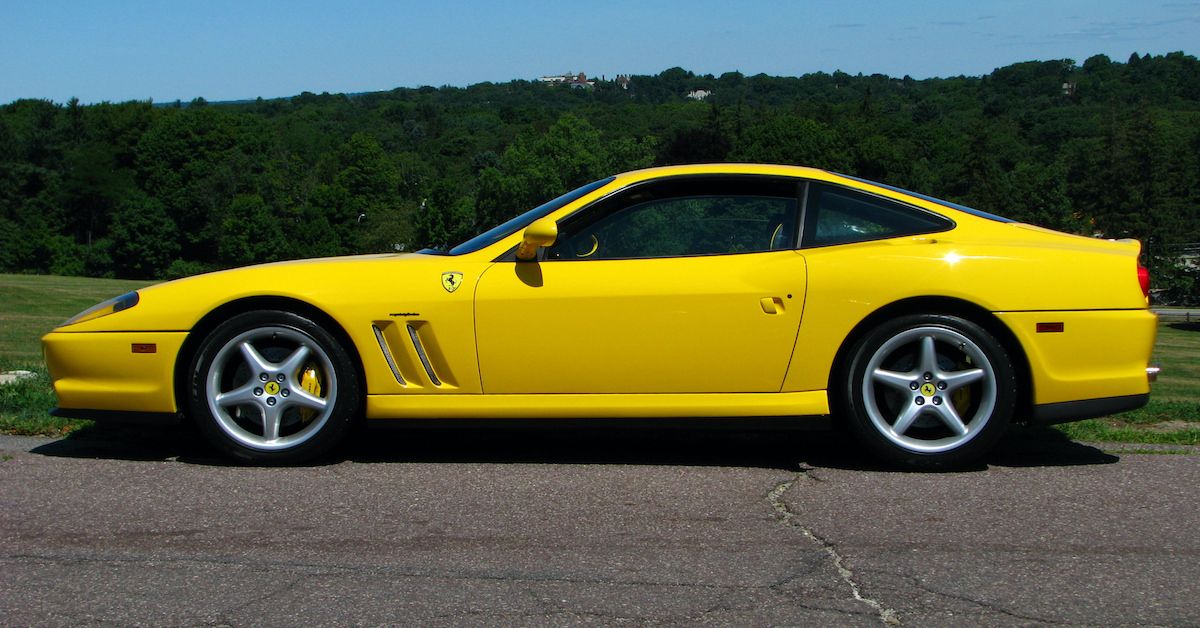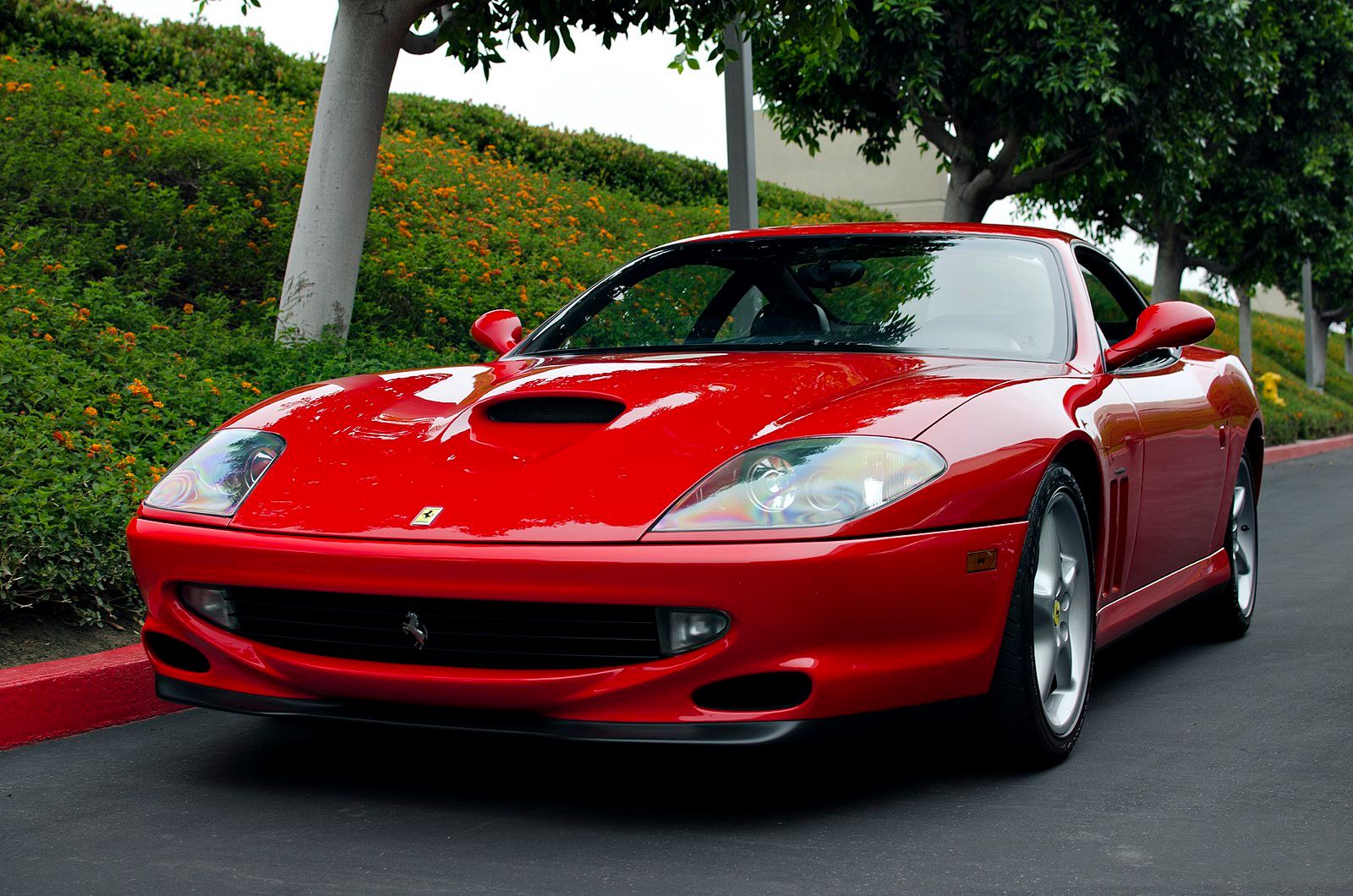Ferrari has made some brilliant mid-engined supercars in its time. From the F355 to the Testarossa, there's no shortage of icons. And while there are many good reasons to love these exotics, Ferrari has also made some fantastic front-engined cars, too, which often don't get as much credit as their mid-engined siblings.
One of the most important cars in this generation of Ferraris is the 550 Maranello. At its time of launch in 1996, the 550 was the first flagship Ferrari that had a V12 at the front in 23 years, with its predecessor being the much-loved Daytona. What Ferrari needed was something exciting, and that's exactly what they gave us.
The 550 very much followed the formula of GT cars before it: longer bonnet, shorter rear end, and a great big lump of an engine up front. Where it progressed, however, was in terms of performance — which, in all fairness, was to be expected given 23 years had passed since the Daytona — as the 550 could max out at just shy of 200 mph.
So, since it's often regarded as the beginning of a new era of fast GT Ferraris, let's take a detailed look back at the Ferrari 550 Maranello.
The 550 Maranello's Place in Ferrari History:
The decision to revert back to front-engined GT cars was an intentional move by Ferrari. According to Evo, former Ferrari chairman Luca Cordero di Montezemolo wanted to develop a more useable car over the mid-engined exotics of the time. Thus, the 550 was born. Ferrari had some brilliant reference points for inspiration, from the iconic 250 GT to the legendary 275GTB, so it was certainly no stranger to good-looking GT cars with big engines.
The 550, however, wasn't the only front-engined V12 Ferrari of the 1990s, as there was also the 456 which launched in '92. And while the 550 is fairly subtle and certainly more practical than other mid-engined cars, the 456 was much more sensible, both in its looks and the fact it came with four seats. That being said, then, the 550 may not have been the first V12 in 23 years, but it was the first flagship two-seater GT since the Daytona.
A Detailed Look at the Ferrari 550 Maranello:
The 550 Maranello first went on sale in 1997 at a cost of around $200,000, which, accounting for inflation, is around $325,000 in today's money. It came with a 5.5 litre — hence the '550' name — quad-cam, dry-sump V12 engine which was a rework of the one used in the 456. It was named the 'Tipo F133A' and had redesigned cylinder heads and a 'resonance effect' induction system, which featured 12 throttle valves and variable-length inlet tracts to improve throttle response. Power was up to 485 bhp and torque was 419 lb-ft, meaning the 550 could hit 60 in 4.3 seconds and max out 199 mph — though many have suggested the car could actually exceed 200 — all while giving that mechanical howl you'd expect from a Ferrari V12. Although this seems slow by comparison to more contemporary GTs like the 812 — try 0-60 in less than three seconds and 212 mph flat out — it was, however, very fast for 1996. And let's not forget one of the 550's best features: that open-gated, six-speed manual shifter.
As for the car's name itself — 550 Maranello — things are pretty self-explanatory: the 550 part references its 5.5-liter displacement, while Maranello is the birthplace of the prancing horse. And while the 550 was of course brilliant at going quick and making a fantastic exhaust note while doing so, it was also excellent at doing what a GT does best: cruising comfortably over a long distance. The interior, for example, was typical Ferrari, with the finest Italian leather covering everything from the steering wheel to the parcel shelf, depending on your preference. The ride was comfortable, too, with WhatCar reporting that the ride was absorbent over most surfaces, meaning the 550 excelled in its cruising abilities.
Best of all, though, was the way the 550 looked. Long gone was the look-at-me styling of the Testarossa. Instead, things were subtle. Refined. If you opted for one in a different color to Rosso Corsa, then it wouldn't jump out to anybody as being a Ferrari — enthusiasts aside, of course. But that was the point. It was what Ferrari intended all along. It was designed by Pininfarina — the Italian design and coachbuilding firm responsible for some iconic cars — and what they created was a masterpiece. The long bonnet, shorter rear end, and muscular — but subtle — curves represented a new era of Ferrari, while also being reminiscent of those iconic GT cars from the '60s and '70s we all know and love. With all things considered, then, it's little wonder why the 550 is regarded as one of the best to ever come from Maranello and continues to be the benchmark for many of the super GT Ferraris of the modern era.
Sources: Evo.co.uk, Autocar.co.uk, Whatcar.com, Featured image: NellsWiki, CC BY 3.0, via Wikimedia Commons



